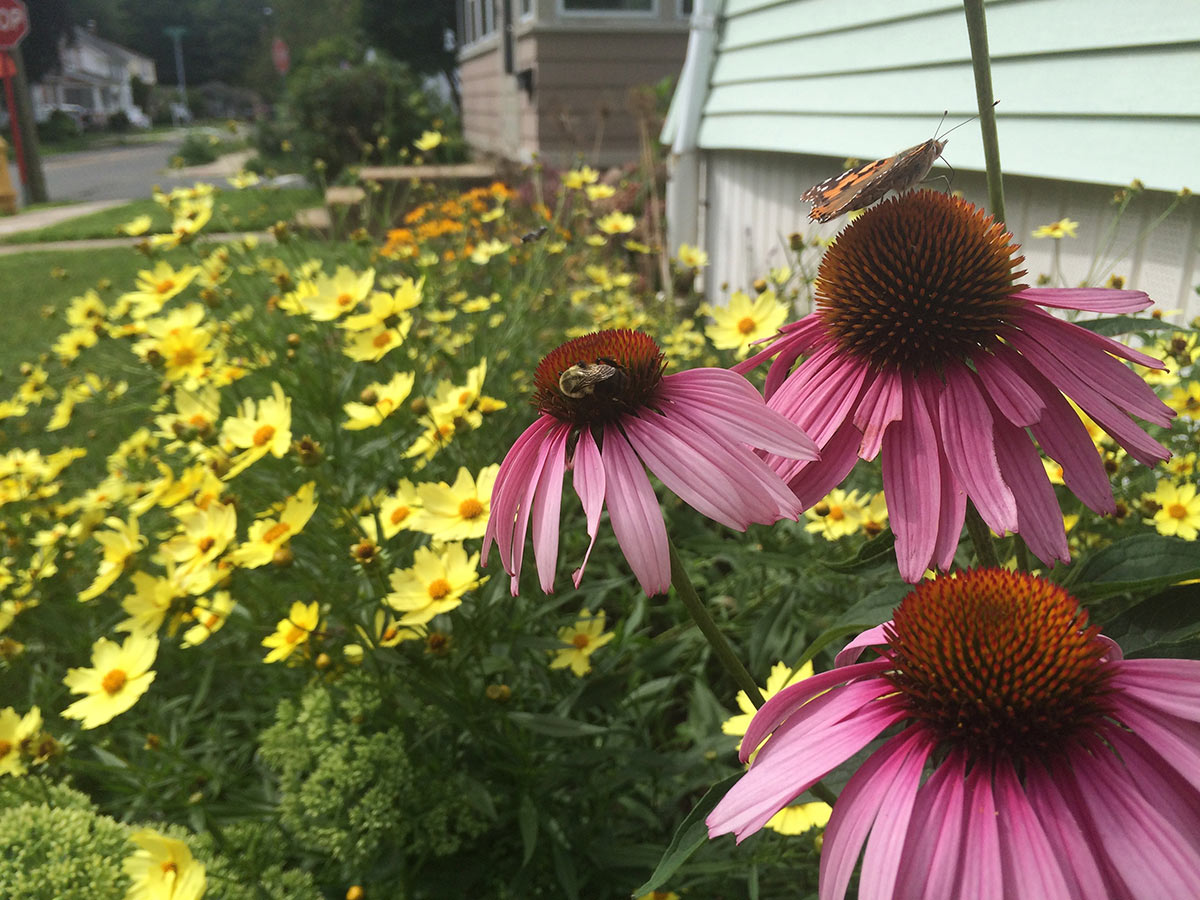The reports are usually the same: bees, butterflies, or other insects littering the ground. Many dead, some twitching and falling over. If you’ve ever stumbled upon something similar, you might remember your confusion and sadness over the scene.
These incidents (sometimes called "bee kills" or "butterfly kills") are often caused by pesticides, and they are part of a concerning trend: we are losing insects. Butterflies in the United States have declined by over 20% in twenty years. This means that for every five butterflies seen 20 years ago, now there are only four.
Finding insects that have been harmed by pesticides is a sad experience. But community members like you can create something good from that loss. In this blog, we’ll lay out why these unfortunate incidents happen, what you can do about it, and why your actions matter.
Pesticides can poison bees and butterflies, not just pests
Despite their name, most pesticides do not differentiate between “pests” and harmless or helpful wildlife. Many insecticides (pesticides designed to kill insects, arachnids, and other bugs), are broadly poisonous to all bugs, including bees, butterflies, and other beneficial insects. Even herbicides and fungicides (which target plants and fungi, respectively) can also harm insects, too. As a result, using pesticides often leads to pollinators being caught in the line of fire.
Examples include the death of over 50,000 bumblebees in Wilsonville, Oregon after blooming trees were sprayed with an insecticide, or the death of thousands of monarch butterflies in North Dakota and Minnesota after the region was sprayed for mosquitoes.

How to tell if insects have been poisoned by pesticides
When insects have been poisoned by pesticides, you might see:
- Dead or dying bugs scattered on the ground. This can happen on a single day, or over the span of several days or weeks. Insects might be the same kind (for example, all bumble bees), or you might see a mix of different types.
- Insects that appear disoriented, moving slowly or sluggishly.
- Falling over when the insects try to walk or fly. They may try and fail to spread their wings.
- Uncontrolled movement or twitching of their body parts.
If you see something that matches any of these symptoms, it’s time to take action.
What to do when you find dead insects
If you find dead insects , spring into action to gather information and report what you see. But don’t delay: pesticides can break down quickly, making them harder to detect. So act as soon as you can. Your report raises awareness of the risks of pesticides and may even be used to improve practices and prevent future harm. Here’s what to do:
1) Gather information
- When did you notice the dead insects? Did it happen once or over several days?
- Where did you find the insects? Are there nearby things that would attract insects, like flowering plants?
- How many insects do you see on the ground? If there are too many to count, try counting the number in a 1 foot x 1 foot square, and use that number to estimate how many are in the whole area.
- What kind of insects are they? Bees, butterflies, or something else? Do they all look like the same species, or different?
- Any pesticide sprays you noticed before seeing the dead insects?
- Include photos or videos of the insects you see. Include a common object as a size reference, like a ruler or a penny. This can help others identify the insects.
2) Report what you see
- Find out who manages pesticides in your state. Contact that agency to report what you see, and ask if the agency is sending staff to investigate.
- Notify your state’s environmental agency and wildlife agency. They may be especially interested in whether any species at-risk of extinction were affected.
- Notify the United States Environmental Protection Agency (EPA) and submit a report through the National Pesticide Information Center. This report may be used by the agency to inform future pesticide regulation.
- If you know what pesticide might have caused the harm, consider reporting the incident to the company that makes it. Manufacturers are required by law to submit such reports to the EPA. Use this list of pesticide manufacturers to find the right one.
- Local contacts may also be interested in your report. For example, consider reaching out to your HOA if you found the dead insects in your neighborhood. Likewise, contact your city parks department if it happened on public property.

Should I pick up dead insects?
When many insects are dead and pesticide poisoning is suspected, state agencies may send their staff to investigate within a day. In this case, it is best to leave the affected insects on the ground until staff arrive. This allows staff to collect the insects and test them for pesticides. However, agencies may face barriers to investigating, including limited time and resources.
If you learn that your state agency cannot respond same-day or is unable to investigate at all, consider collecting the affected insects yourself. Use tweezers or gloves if you can, and aim to collect 10 grams — the weight of about 100 honeybees. Store the insects in a clean container in the freezer. By getting creative, you may find a local organization willing to test the insects for pesticide contamination. Try contacting your local university's extension office, or conservation organization.
You can protect insects from future harm!
Pesticide poisoning in insects is preventable. While these incidents are sometimes caused by truly reckless users, they they can also be caused by normal pesticide use: just following the instructions on the bottle.
Plus, just because insects aren’t dropping dead doesn’t mean that they are not being harmed by pesticides. Just like with any other poison, a small dose can still seriously affect you, even if it’s not enough to kill outright. Even at low levels, pesticide exposure can damage insects’ ability to grow, reproduce, collect food, and even just find their way home. Pesticides can also weaken individuals and colonies over time, making them more vulnerable to other threats, like diseases, parasites, and poor nutrition. These effects add up, causing populations to decline over time.
This is why the best way to protect insects from pesticides is to avoid using them altogether! Try these pollinator-friendly tips for reducing your pesticide use, and encourage your friends and neighbors to do the same. Together, we can all work to protect our bees and butterflies for generations to come.
- For bees’ sake, don’t spray for mosquitoes! Dump standing water on your property to prevent mosquitoes from breeding. It’s more effective than spraying!
- Choose prevention over pesticides by planting native flowering plants that thrive in local conditions.
- Create habitat for insects that eat pests, like lady beetles, lacewings, and stingless wasps.
- Purchase plants that are free from pesticides, and ask your nursery about their pesticide use.







